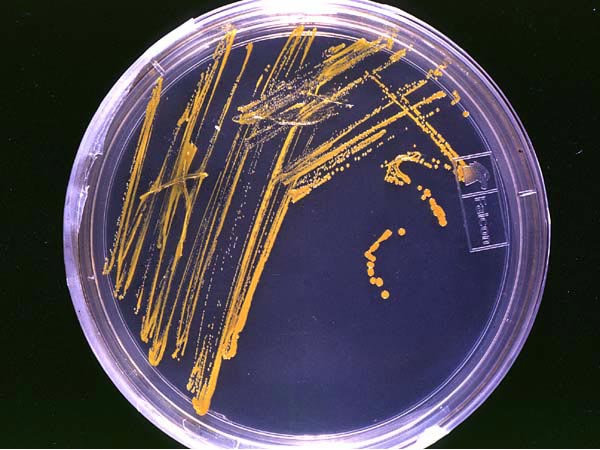
Petri Dish
The Petri Dish is
named for Julius
Petri (1852 - 1921), who first described it in
1887 as a modification of Koch's culture plates. A typical
Petri dish comprises a bottom dish that holds agar or
other culture medium, and a slightly larger cover plate that
fits over the bottom so as to allow circulation of air, but
prevents the entrance of micro-organisms.
In a typical application shown here, a bacterial sample in high concentration is "streaked" onto the place [left] so that the initial concentration is diluted. A second streaking with a new needle further dilutes the original culture [top], and the final streaking [right] dilutes the initial culture to individual cells. Each of these then grows as a single, round colony that comprises genetically identical cells.
In a typical application shown here, a bacterial sample in high concentration is "streaked" onto the place [left] so that the initial concentration is diluted. A second streaking with a new needle further dilutes the original culture [top], and the final streaking [right] dilutes the initial culture to individual cells. Each of these then grows as a single, round colony that comprises genetically identical cells.